The Audubon Mushroom Field Guide is a comprehensive resource for identifying North American fungi, featuring over 700 species with full-color photographs organized by color and shape․
1․1 Overview of the Guide’s Purpose and Scope
The Audubon Mushroom Field Guide aims to provide a detailed and accessible resource for identifying North American fungi, covering over 703 species with full-color photographs․ Organized visually by color and shape, it simplifies identification for enthusiasts and researchers alike․ The guide serves as a tool for education, conservation, and scientific study, offering comprehensive insights into the diverse world of mushrooms․
1․2 Importance of Mushroom Identification
Accurate mushroom identification is crucial for safety, scientific understanding, and conservation․ It helps distinguish edible species from poisonous ones, preventing harm․ Additionally, it aids researchers in studying fungal diversity and ecology, contributing to broader environmental knowledge․ The Audubon guide facilitates this process, making it an essential tool for both enthusiasts and professionals in the field of mycology․
History and Significance of the National Audubon Society
The National Audubon Society, founded over a century ago, is dedicated to conservation and education․ It has expanded its mission to include field guides, enhancing nature awareness and stewardship․
2․1 Founding and Mission
The National Audubon Society, founded in 1886 by George Bird Grinnell, is dedicated to conservation and education․ Named after John James Audubon, it aims to protect wildlife habitats and promote environmental stewardship through science and advocacy, inspiring millions of nature enthusiasts and educators across North America․
2․2 Contribution to Nature Guides
The National Audubon Society has produced iconic field guides since 1970, setting a new standard with visually organized, accessible content․ Their guides, including the mushroom field guide, combine detailed photography and expert knowledge, making complex subjects approachable for enthusiasts and researchers alike, while promoting conservation and education․
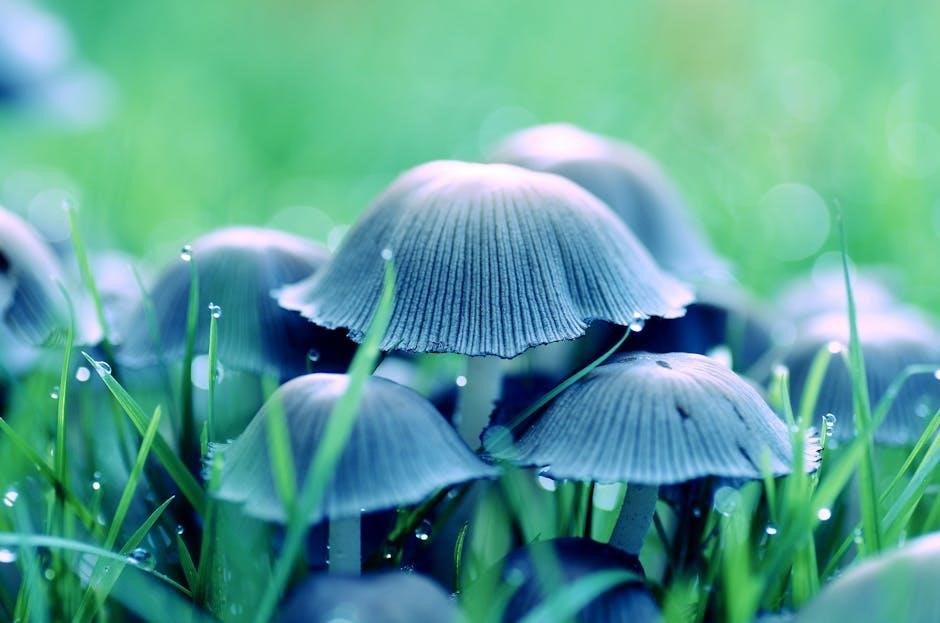
Key Features of the Field Guide
The guide features over 700 species, full-color photography, and a unique thumb-tab system for easy navigation, with durable binding and visual organization by color and shape․
3․1 Visual Organization by Color and Shape
The guide organizes mushrooms by color and shape, using a unique thumb-tab system for quick reference․ This visual approach simplifies identification, especially in the field, where similar species often coexist․ Over 700 species are categorized this way, making it intuitive for users to narrow down possibilities based on observable characteristics, enhancing the efficiency of mushroom identification for both enthusiasts and researchers․
3․2 High-Quality Photography
The guide features over 700 full-color, high-quality photographs, showcasing mushrooms in their natural habitats․ These images are meticulously arranged to highlight key identification features, such as cap texture, gill attachment, and color variations․ The photography is crisp and detailed, aiding enthusiasts and researchers in accurately identifying species, making it an indispensable tool for both fieldwork and scientific study․
3․3 Extensive Species Coverage
Covering over 700 species, the guide provides detailed descriptions, including habitat, size, and spore characteristics․ It also notes hundreds of additional species, offering a broad spectrum of North American fungi․ This extensive coverage makes it a valuable resource for both amateur enthusiasts and professional mycologists, ensuring comprehensive understanding and identification of diverse mushroom species across the region․
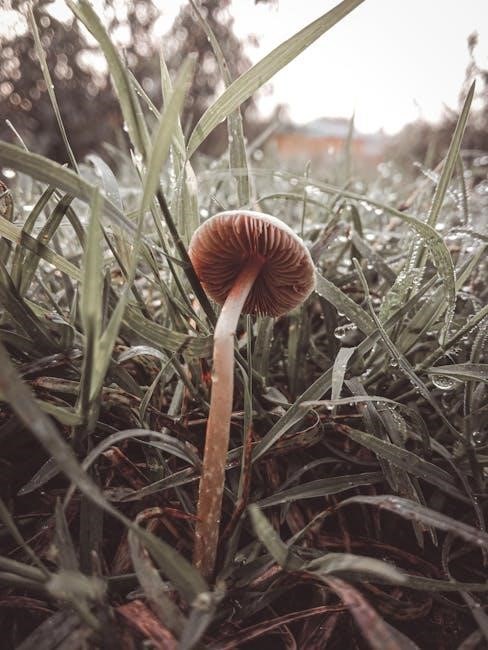
How to Use the Guide Effectively
Use the guide’s visual organization by color and shape, along with the thumb-tab system, to quickly locate and identify mushrooms․ High-quality images aid accurate identification, while detailed descriptions provide essential information for effective field use․
4․1 Navigation and Search Tips
The guide features a thumb-tab reference system, allowing quick access to mushroom species․ Users can navigate by color, shape, and habitat, with high-quality images aiding visual identification․ The organization by appearance rather than strict taxonomic groupings simplifies field use, enabling enthusiasts to efficiently narrow down species based on observable characteristics․
4;2 Effective Identification Techniques
The guide emphasizes observing cap shape, size, gill or pore characteristics, and habitat․ Users are encouraged to note spore prints and seasonal appearances․ The visual key organizes species by color and shape, while detailed descriptions highlight distinctive features․ Cross-referencing with high-quality images ensures accurate identification, making the guide accessible for both beginners and experienced mycologists․
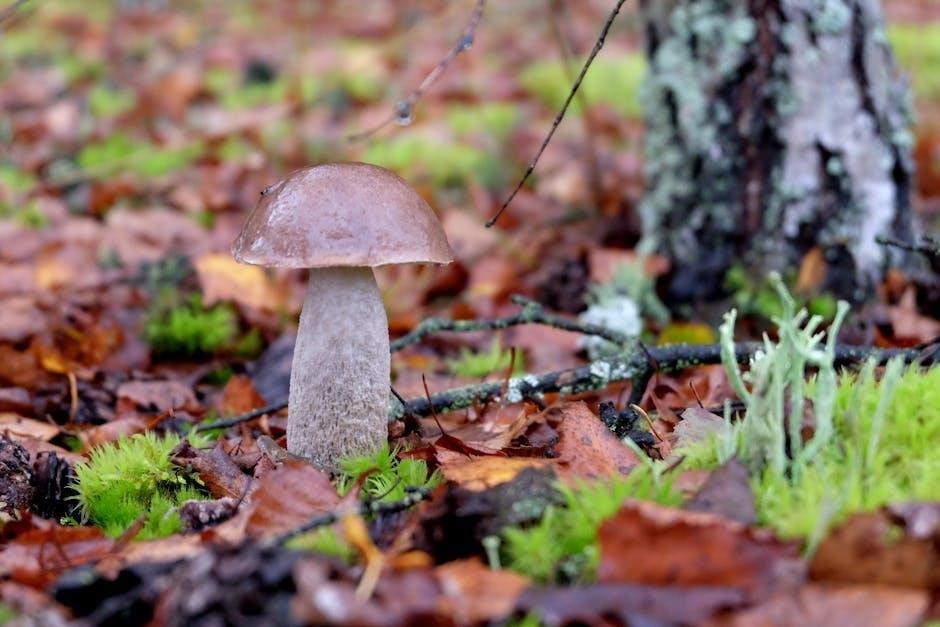
Target Audience
The guide caters to mushroom enthusiasts, hobbyists, and researchers, providing detailed information for both casual exploration and scientific study of North American fungi․
5․1 Enthusiasts and Hobbyists
The Audubon Mushroom Field Guide is a must-have for enthusiasts and hobbyists, offering detailed descriptions and stunning photography․ Its visual organization by color and shape, along with a thumb-tab system, makes identification quick and accessible․ Whether for casual exploration or dedicated study, the guide provides an essential tool for anyone passionate about discovering and understanding North American fungi․
5․2 Researchers and Scientists
The Audubon Mushroom Field Guide is an invaluable resource for researchers and scientists, providing detailed descriptions of over 700 species․ Its organization by color and shape, along with a visual key, facilitates quick identification․ Updated to reflect advancements in DNA sequencing and climate change impacts, the guide supports scientific study and contributes significantly to mycological research and education․
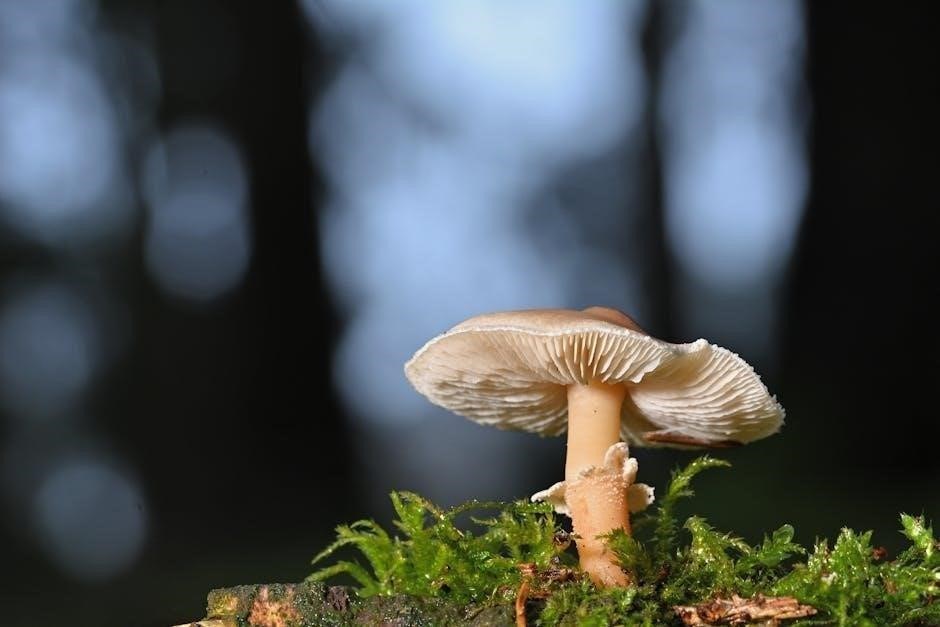
Comparison with Other Field Guides
The Audubon Mushroom Field Guide stands out for its visual organization by color and shape, offering a unique and efficient identification system compared to other guides․
6․1 Unique Aspects of Audubon’s Guide
The Audubon Mushroom Field Guide is distinguished by its visual organization, arranging species by color and shape for intuitive identification․ It features a unique thumb-tab system, over 700 species, and high-quality photographs, making it a standout resource for both enthusiasts and researchers․ This approach ensures quick and accurate identification, setting it apart from other field guides․
6․2 Advantages Over Competitors
The Audubon Mushroom Field Guide surpasses competitors with its visual organization by color and shape, a unique thumb-tab system, and extensive coverage of over 700 species․ Its high-quality photographs and updated information on climate change impacts and DNA sequencing advancements make it more comprehensive and user-friendly than other field guides, catering to both enthusiasts and scientists․
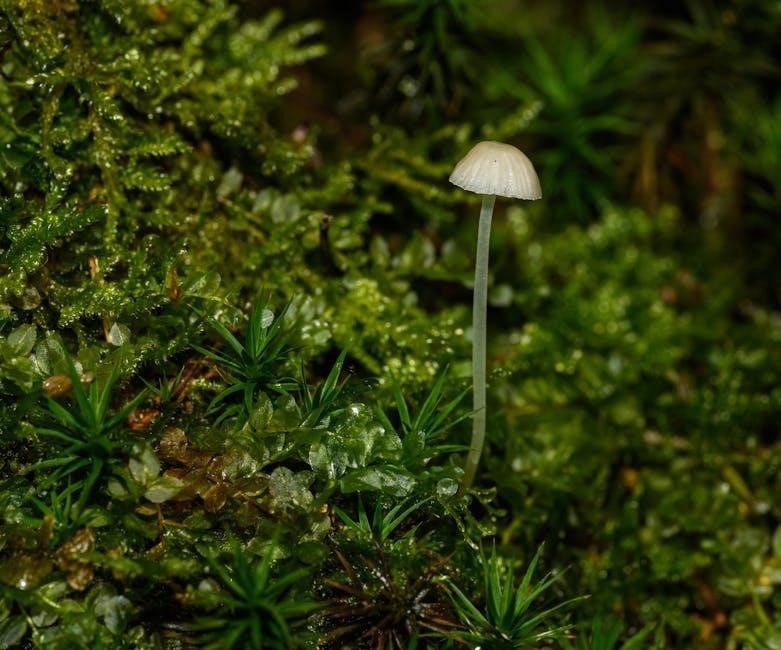
User Reviews and Testimonials
The Audubon Mushroom Field Guide receives praise for its comprehensive coverage and photography, though some critics find it bulky compared to alternatives like the Falconguide․
7․1 Positive Feedback and Praise
The Audubon Mushroom Field Guide is widely praised for its comprehensive coverage of over 700 species, with users appreciating its detailed descriptions and vibrant, full-color photographs․ Many enthusiasts and professionals highlight its portability and the innovative visual organization by color and shape, making it an indispensable tool for field identification․ The guide’s thumb-tab reference system and durable binding are also commended for their practicality and ease of use․
7․2 Criticisms and Areas for Improvement
Some users find the guide’s dense information overwhelming, particularly for beginners․ A few critics note that the visual organization, while innovative, can be challenging to navigate quickly․ Additionally, the lack of weatherproof material has been a point of concern for field use․ While the photography is praised, some suggest including more images of mushrooms in various growth stages to aid identification․ Minor errors in species descriptions have also been reported, highlighting the need for periodic updates to ensure accuracy and reflect ongoing mycological research․
Author Background: Gary H․ Lincoff
Gary H․ Lincoff, a renowned mycologist, serves as president of the North American Mycological Association and instructs at the New York Botanical Gardens, bringing deep expertise to the guide․
8․1 Expertise in Mycology
Gary H․ Lincoff, a leading mycologist, brings extensive knowledge to the Audubon guide․ As president of the North American Mycological Association and an instructor at the New York Botanical Gardens, his expertise spans decades of research and education․ His work emphasizes accurate identification and conservation, reflected in the guide’s detailed descriptions and high-quality photographs, making it an indispensable tool for both enthusiasts and scientists․
8․2 Contributions to the Field
Gary H․ Lincoff’s contributions to mycology are profound․ His field guide revolutionized mushroom identification by organizing species visually, making it accessible to novices and experts alike․ He has also contributed to conservation efforts and education, inspiring a new generation of mycologists and enthusiasts, ensuring the continued exploration and appreciation of North America’s fungal diversity․
Conservation Efforts by Audubon
Audubon actively protects fungal habitats and promotes environmental education, ensuring the preservation of North America’s diverse ecosystems for future generations through science and community engagement․
9․1 Protecting Fungal Habitats
Audubon’s conservation efforts focus on safeguarding habitats crucial for fungal growth, ensuring ecosystems remain intact․ By addressing climate change and promoting sustainable land use, Audubon protects the delicate balance of nature, preserving fungal diversity and their essential roles in ecosystems for future generations to study and appreciate through guides like their field guide․
9․2 Educational Programs
Audubon’s educational programs focus on fostering awareness and appreciation of fungi through workshops, lectures, and interactive activities․ These initiatives engage local communities, schools, and conservation centers, inspiring stewardship of natural habitats․ By educating the public about mushrooms and their ecological roles, Audubon promotes a deeper connection with nature, encouraging responsible exploration and conservation efforts among enthusiasts and researchers alike․
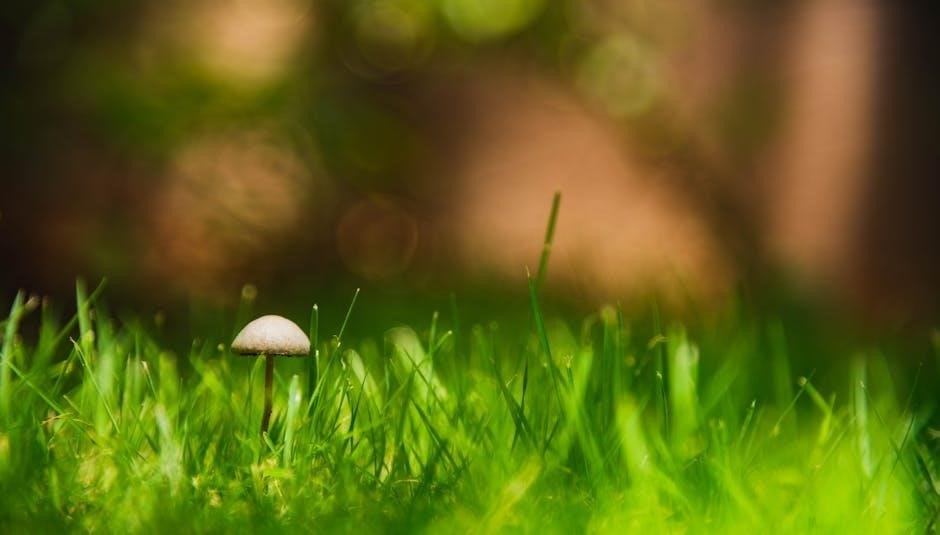
Impact of Climate Change
Climate change alters mushroom habitats and species distribution, affecting their growth cycles and ecological roles․ The guide documents these shifts, aiding researchers in understanding fungal responses to environmental changes․
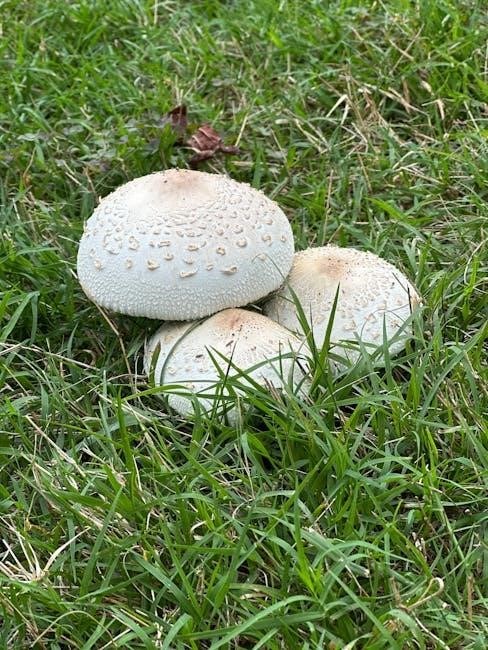
10․1 Effects on Mushroom Species
Climate change is altering mushroom habitats, disrupting distribution patterns, and affecting growth cycles․ Some species are declining in warmer regions, while others shift their fruiting times․ The guide highlights these changes, documenting how climate variability impacts fungal ecosystems and biodiversity, providing valuable insights for researchers and conservation efforts․
10․2 Adaptation Strategies
The Audubon guide emphasizes adaptation strategies to mitigate climate change impacts on mushrooms․ It highlights conservation efforts, such as protecting fungal habitats and promoting sustainable practices․ The guide also advocates for education and research to better understand and address these changes, ensuring the preservation of fungal diversity for future generations․
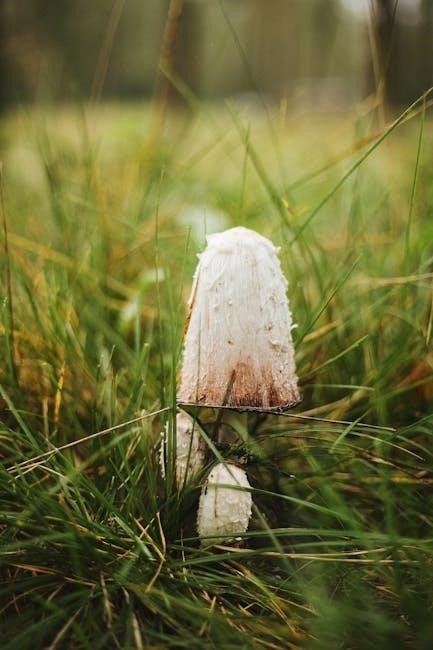
Guide Structure and Design
The guide features a thumb-tab reference system and durable vinyl binding, ensuring longevity and ease of use in the field․ Organized by color and shape, it enhances quick identification․
11․1 Thumb-Tab Reference System
The Audubon guide incorporates a unique thumb-tab system, allowing users to quickly navigate through species by color and shape․ This intuitive design enhances field identification, making it easier to locate specific mushrooms efficiently․ The tabs are strategically placed, ensuring that users can flip through the guide seamlessly while exploring natural habitats․ This feature is particularly praised for its practicality and user-friendly approach․
11․2 Durable Binding
The Audubon Mushroom Field Guide features a sturdy, weather-resistant vinyl binding designed to withstand the rigors of outdoor use․ This durable construction ensures the guide remains intact even in challenging field conditions, making it a reliable companion for mushroom enthusiasts and researchers alike․ The binding’s resilience complements the guide’s comprehensive content, ensuring long-term usability in various environments․
Digital Resources and the Audubon App
The Audubon app offers advanced mushroom identification tools, including a detailed search function with fields like shape, color, and habitat, enhancing the field guide experience․
12․1 App Features
The Audubon app features an advanced search function, allowing users to filter mushrooms by shape, cap texture, color, gill attachment, habitat, month, region, size, spore-bearing surface, and stalk shape․ It includes stunning photography and detailed descriptions, enabling precise identification․ The app enhances the field guide experience with interactive tools, making it indispensable for both enthusiasts and researchers in the field․
12․2 Enhancing Field Experience
The Audubon app complements the field guide by offering a seamless outdoor experience․ Its advanced search and identification features allow users to quickly pinpoint species in their natural habitats․ The app’s portability and user-friendly interface make it an essential companion for mushroom enthusiasts, enhancing their ability to explore and understand the diverse world of North American fungi with greater accuracy and confidence․
Importance of Field Guides in Mycology
Field guides like the Audubon Mushroom Field Guide are essential for mycology, providing detailed, accessible information for identifying species and fostering education and research in fungal studies․
13․1 Role in Education
The Audubon Mushroom Field Guide plays a vital role in education by providing a comprehensive, visually organized resource for students, educators, and enthusiasts․ Its detailed descriptions and high-quality photographs make complex mycological concepts accessible, fostering a deeper understanding of fungal diversity․ The guide’s structured approach enables learners to master identification techniques, making it an indispensable tool for both classroom and field-based education in mycology․
13․2 Contribution to Research
The Audubon Mushroom Field Guide significantly contributes to research by providing a detailed, visually organized database of over 700 North American fungi species․ Its high-quality photographs and updated classifications, reflecting advancements in DNA sequencing, serve as a valuable reference for scientists studying fungal diversity and the impacts of climate change on mushroom populations․
The Guide’s Reception in the Mycological Community
The Audubon Mushroom Field Guide is widely praised for its comprehensive coverage and visual organization, making it a must-have resource for both enthusiasts and researchers․
14․1 Impact on Research and Education
The Audubon Mushroom Field Guide has significantly advanced mycological knowledge, offering detailed species descriptions and high-quality visuals that aid researchers and educators․ Its comprehensive coverage supports scientific studies and classroom learning, making it an invaluable tool for both professionals and students in the field of mycology;
14․2 Community Engagement
The Audubon Mushroom Field Guide fosters community engagement by providing accessible tools for enthusiasts and professionals alike․ Its visual organization and photography enable collaborative learning, while updates on climate change and species classification encourage discussions among researchers and hobbyists․ The guide’s educational programs and events further strengthen its role in building a connected mycological community․
The Audubon Mushroom Field Guide stands as an essential tool for enthusiasts and scientists, offering comprehensive, visually organized information while fostering a deeper appreciation for mycology․
15․1 Summary of Key Points
The Audubon Mushroom Field Guide is a comprehensive resource for North American fungi, featuring over 700 species with full-color photographs organized by color and shape for easy identification․ Designed for enthusiasts and researchers, it includes detailed descriptions, habitat information, and updated classifications reflecting climate change and DNA sequencing advancements․ Its durable design and visual thumb-tab system make it a practical and indispensable tool for fieldwork and study․
15․2 Final Thoughts
The Audubon Mushroom Field Guide stands as an indispensable resource for mushroom enthusiasts and researchers alike, offering unparalleled depth and accessibility․ Its visually organized, full-color photography and comprehensive coverage of over 700 species make it a benchmark in mycology․ Combined with its durable design and companion app, this guide ensures a lasting impact on both field exploration and scientific study, solidifying its place as a trusted companion for nature lovers and experts․
Bibliography and Further Reading
The Audubon Mushroom Field Guide is a comprehensive resource with full-color photographs and detailed descriptions, published by Knopf․ It is a must-have for enthusiasts and researchers alike․
16․1 Recommended Resources
The Audubon Mushroom Field Guide is a primary resource, offering detailed descriptions and photographs․ Supplementary materials include the Audubon app, which enhances identification with advanced search features․ Gary H․ Lincoff’s expertise ensures accuracy, while online forums and communities provide additional support for learners and enthusiasts seeking deeper knowledge․
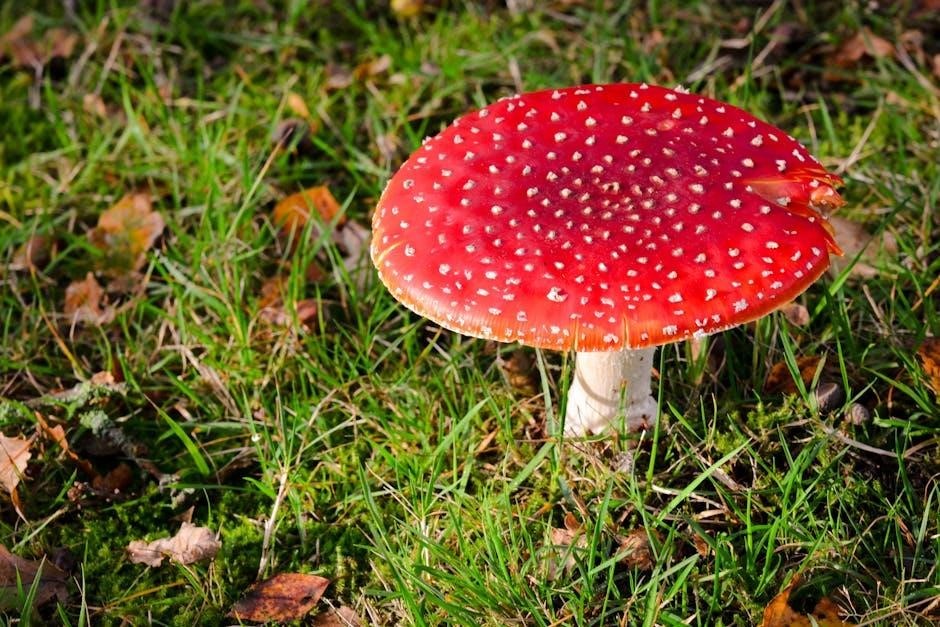
16․2 Additional References
For further exploration, additional resources like the Peterson Field Guide to Mushrooms and FalconGuide to North American Mushrooms offer complementary insights․ These texts, along with online forums and scientific journals, provide a well-rounded understanding of mycology․ The Audubon guide’s visual organization and photography make it a standout, while these references add depth for advanced study and species comparison․
